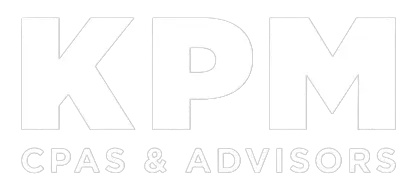It’s key to remember that financial reporting is about more than compliance as the calendar year entities begin their work on their year-end financials. Finding your business value using financial statements has many benefits for business owners to take advantage of. They can help make better informed decisions and provide a wealth of data that helps assess business value. Here’s a look at how business valuation professionals are using financial statements to estimate fair market value.
Balance Sheets
Valuators turn to the balance sheet when applying the cost (or asset-based) approach. This report identifies a company’s assets and liabilities. It can be especially relevant for companies that rely heavily on tangible assets (such as manufacturers and real estate holding companies).
The cost approach derives value from the combined fair market value of the business’ net assets minus any liabilities. Under U.S. Generally Accepted Accounting Principles (GAAP), assets are generally recorded at the lower of cost or market value. So, adjustments may be needed to align an item’s book value with its fair market value. For instance, inventory may include obsolete or unsalable items. And unreported contingent liabilities — such as pending lawsuits, environmental obligations, and warranties — also must be accounted for.
In addition, a GAAP balance sheet may omit certain items, such as internally developed patents, brands, and goodwill. Because value derived under the cost approach generally excludes intangible value, it may serve as a useful “floor” for a company’s value. Valuators typically use another technique to arrive at a value estimate that includes intangibles.
Income Statements
Valuators often use the income statement when applying the market approach. Under this approach, the valuator develops pricing multiples from recent arm’s-length transactions involving similar public or private businesses. Then, the pricing multiples are applied to the same economic variables as reported on the subject company’s financial statements.
Pricing multiples can sometimes be computed from balance sheet or cash flow metrics, such as net book value or operating cash flow. However, these multiples are typically based on key metrics from the income statement, such as revenue, net income, or earnings before interest, tax, depreciation, and amortization.
Two methods that fall under the market approach are:
- The guideline public company method, based on the market prices of comparable public company stocks
- The guideline transaction (or merger and acquisition) method, where the expert analyzes sales of entire comparable companies or operating units that have been sold
When applying these methods, valuators may need to adjust the subject company’s income statement variables for certain items. Examples include differences in accounting methods, discretionary spending, and nonrecurring or nonoperating items.
Statements Of Cash Flows
Investors often focus less on profits reported on the income statement and more on the amount and timing of net cash flow that’s available to recoup their investment. So, the statement of cash flows can provide insights when a valuator applies the income approach. Here, future expected economic benefits (generally, net cash flows) are converted into a present value.
Two methods that fall under the income approach are:
- The capitalization of earnings method, where future cash flows from a single representative period are capitalized using an appropriate rate of return
- The discounted cash flow method, based on projected cash flows over a discrete period (say, three or five years) and a terminal value at the end of the discrete period
Under the DCF method, all future cash flows (including the terminal value) are then discounted to present value using a discount rate instead of a capitalization rate.
When applying the income approach, a valuator will consider making appropriate adjustments to the subject company’s cash flows to reflect the economic benefits investors could expect to receive in the future. They want to know how much money will be available to recoup their investment after funding business operations, paying taxes, making necessary capital investments, and servicing debt.
Another essential part of the income approach is the discount rate used to convert future cash flows to their net present value. Discount rates vary depending on an investment’s perceived risk. Footnote disclosures from reviewed or audited financial statements can help valuators assess company-specific risks.
Beyond The Financials
Finding your business value using financial statements provides key data. But valuators usually need to gather more documents (such as tax returns, marketing materials, and key contracts) and conduct additional procedures (such as site visits and management interviews) to arrive at a reliable value conclusion. Contact us to learn what it takes. We can provide a comprehensive list of required documents and explain how the valuation process works.


